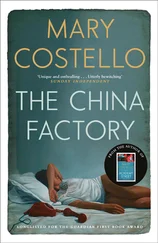Bryce Courtenay - The Potato Factory
Здесь есть возможность читать онлайн «Bryce Courtenay - The Potato Factory» весь текст электронной книги совершенно бесплатно (целиком полную версию без сокращений). В некоторых случаях можно слушать аудио, скачать через торрент в формате fb2 и присутствует краткое содержание. Жанр: Современная проза, на английском языке. Описание произведения, (предисловие) а так же отзывы посетителей доступны на портале библиотеки ЛибКат.
- Название:The Potato Factory
- Автор:
- Жанр:
- Год:неизвестен
- ISBN:нет данных
- Рейтинг книги:3 / 5. Голосов: 1
-
Избранное:Добавить в избранное
- Отзывы:
-
Ваша оценка:
- 60
- 1
- 2
- 3
- 4
- 5
The Potato Factory: краткое содержание, описание и аннотация
Предлагаем к чтению аннотацию, описание, краткое содержание или предисловие (зависит от того, что написал сам автор книги «The Potato Factory»). Если вы не нашли необходимую информацию о книге — напишите в комментариях, мы постараемся отыскать её.
The Potato Factory — читать онлайн бесплатно полную книгу (весь текст) целиком
Ниже представлен текст книги, разбитый по страницам. Система сохранения места последней прочитанной страницы, позволяет с удобством читать онлайн бесплатно книгу «The Potato Factory», без необходимости каждый раз заново искать на чём Вы остановились. Поставьте закладку, и сможете в любой момент перейти на страницу, на которой закончили чтение.
Интервал:
Закладка:
'Orphan school?' Mary said, suddenly alert. 'There be a school 'ere for brats what's not owned?'
'Wesleyans, not Church of England. Don't know that much teachin' be done, though. I could put in a word?' He paused and then added, 'Got any,' he coughed lightly and grinned, 'gold… a sovereign perhaps?'
Mary sighed, 'Blimey! For a moment there I thought you was all 'eart, sir!'
The muster master shook his head, 'No 'eart to be found in these parts, only money! All the 'eart you wants if you can pay for it!' He cleared his throat and pursed his lips, suddenly conscious of his position, then he resumed writing.
'Be there a library, sir?' Mary asked.
The muster master looked up over the top of his spectacles. 'Mrs Deane runs the Circulating Library, books to hire. There's no books for convicts though, Mrs Deane don't 'ave no dealings with convicts.'
At the conclusion of the interrogation Mary was allocated a police number. Being kindly disposed to numbers she was delighted to find hers was No.7752. In her mind she immediately converted this to three 7s which she knew to be astonishingly good luck. Abacus, Mary – Female Convict, No.7752 became, together with the name of her ship, as affixed as her surname for the entire period of Mary's sentence.
Once these preliminaries were completed, Mary and Ann Gower were issued with new clothing. This consisted of a cotton gown of cheap, coarse material, a petticoat, jacket and apron, and a straw bonnet. Large yellow Cs were marked in a prominent place upon each article of clothing, though this was not necessary, the outfit itself bespoke a prisoner as surely as if it had been patterned with arrows. Those possessions they still had on board were taken from them though Mary was careful to conceal Ikey's medal in her prisoner's purse safely tucked away in its usual place. She was able to persuade the prisoner matron to allow her to retain her beloved abacus and her papier mache crown, but her precious copy of Gulliver's Travels was taken from her.
The two women were then placed in light irons and ferried ashore. Here they were met by a lone trooper and marched under guard up Macquarie Street to the Female Factory. On the way they passed the two men hanging from a gibbet, though Mary did not look. Her mind was filled with anticipation of a new land and she did not need so ready a reminder of where she had come from.
'Poor bastards!' Ann Gower spat. 'Looks like nothin'
'as changed.'
'No, Ann, you must see it differently. Everythin'
'as changed for us, everythin'!' Mary said.
The Female Factory was abutted to the male gaol forming a part of it and separated by a twelve foot wall. In all, it consisted of only four rooms. Two sleeping rooms had a total capacity of fifty women, thirty in one and twenty in the other, the sick room could accommodate another nine bodies and the work room another forty. At this point, the Factory was fully accommodated in terms most onerous to the comfortable accommodation of the inmates. With the addition of the women and children from the Destiny II, it was crowded almost to the point of suffocation. The prison yard could hold forty prisoners at one time, but could not be used at night for the cold and, besides, was at all times most dreadfully befouled.
Mary and Ann Gower soon found themselves placed without ceremony or further processing, beyond their names being registered, in the larger of the two sleeping rooms which contained fifty of their shipmates, all of whom, it became immediately apparent, were in a high state of excitement. They had been told that they would be assigned and collected the very next day, each to the family of a married settler, where they would work their sentences out as domestic servants, cooks, dairymaids or nursemaids.
As these vocations were to be readily found among their numbers, they had cause to entertain great hopes for a good future. Even those not previously exposed to the particularities of domestic work were confident that they would soon learn the tricks of the trade, having been put to scrubbing, cleaning, sewing and laundry work on board ship.
The women loudly cheered Mary and Ann Gower as they entered, crowding around them and offering their sincerest condolences for the severity of their sentences. But it was apparent that, while both women were greatly admired for their courage, each convict thought herself fortunate not to be sentenced to remain as a refractory prisoner in the Female Factory.
On that first overwhelmingly happy evening ashore, despite the insalubrious environment, the prospect of a good, clean life seemed very possible. Each silently marvelled at the good fortune that had landed her upon the Fatal Shore. They did not yet comprehend that the settler became their absolute master and they his official slaves, a system which openly encouraged the most shocking abuse. The masters of Van Diemen's Land counted few among them who contained a tincture of compassion in their callous and self-serving natures.
The penal system was designed from the beginning to work in three ways, all of which were intended to place the least expense upon the government. The first was to put the responsibility for the care and maintenance of convicts into private hands. This saved money and provided the second advantage, a source of cheap labour for the free settlers who were largely responsible for opening up the land. Finally it was intended to be a useful tool of reform by removing the convict from others of her own kind, separating her from the temptations, bad influences and vices which inevitably flowed from close confinement with her sisters.
In this way it was argued that the convict woman would be given the opportunity to gain self-respect, mend the error of her ways and re-enter society as a sober, God-fearing and useful citizen.
The convict prisoner had no set working hours, was not allowed out at night, must reside in her master's house, could not labour for herself in her free time, if ever such were granted to her, and could not move off the master's property without a pass. She must wear at all times a convict's uniform, though most seemed to find a way around this.
To all this was added the single concession, that a master could not punish his convict servant but had recourse to a magistrate should he have cause for complaint. The prisoner had little redress of her own. Though permitted to give evidence against her master, she was seldom believed unless a free settler was prepared to bear witness for her cause. This was a situation which rarely prevailed, while its converse, brutality and exploitation, was a daily occurrence.
But here too lay a paradox. While only magistrates could punish, most officers of the law were in a quandary to know what to do with females who required punishment. Constant and severe punishment as might have been the case in England would have defeated the unwritten reason why women were sent to Van Die-men's Land – to stabilise the colony through marriage and concubinage. It was silently held that the crimes a female committed brought little permanent harm and posed no danger to society, consisting mostly of absconding, being drunk and disorderly, insolence, fighting, refusing to work, being out without a pass after hours, immoral conduct and minor pilfering.
Whereas a male convict might be given two hundred lashes of the cat o' nine until his flesh was flayed from his back for minor offences, a female convict could not be flogged. Under Governor Arthur's rigid system of order, punishment for a crime other than stealing the property of another was seldom physical. Instead, confinement to gaol and hard labour were imposed. This largely consisted of working at the male prisoners' wash tub, or cleaning the prison slop buckets and water closets. If harsher punishment were deemed necessary, a female convict would receive solitary confinement on bread and water for a week, the cropping of her hair, and be placed in the public stocks for an hour or two. For the truly incorrigible, when all of these remedies had failed, an Iron Collar, a device which fitted about the prisoner's neck and weighed seven pounds, was worn for two days to publicly point to the infamy of the wretch who carried it.
Читать дальшеИнтервал:
Закладка:
Похожие книги на «The Potato Factory»
Представляем Вашему вниманию похожие книги на «The Potato Factory» списком для выбора. Мы отобрали схожую по названию и смыслу литературу в надежде предоставить читателям больше вариантов отыскать новые, интересные, ещё непрочитанные произведения.
Обсуждение, отзывы о книге «The Potato Factory» и просто собственные мнения читателей. Оставьте ваши комментарии, напишите, что Вы думаете о произведении, его смысле или главных героях. Укажите что конкретно понравилось, а что нет, и почему Вы так считаете.












